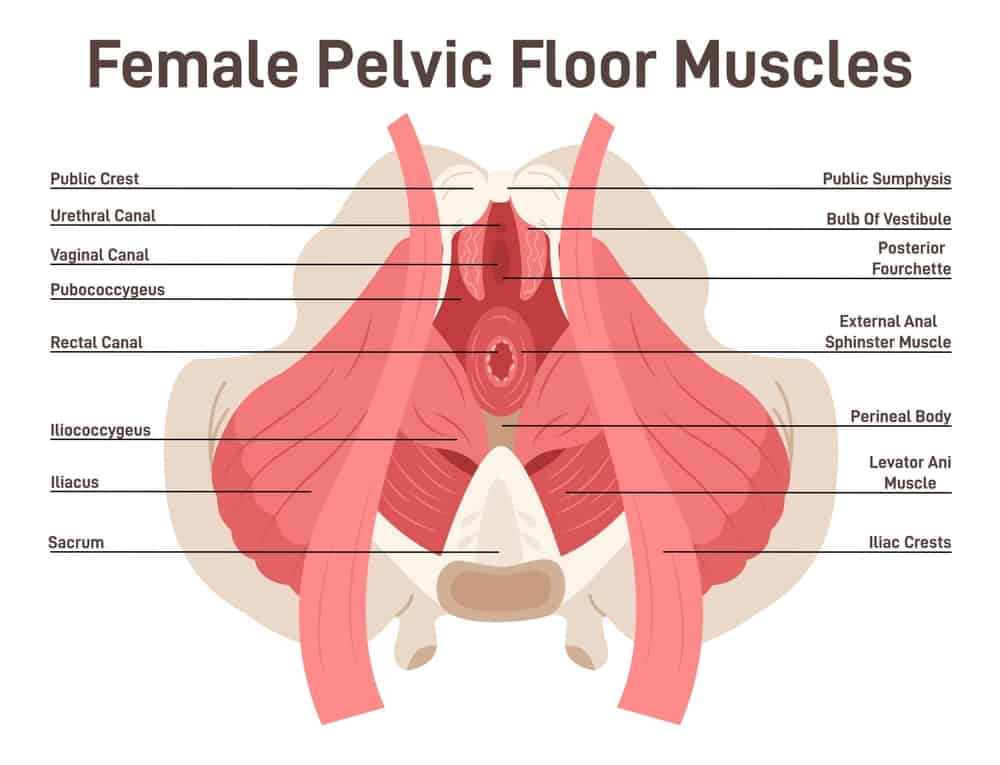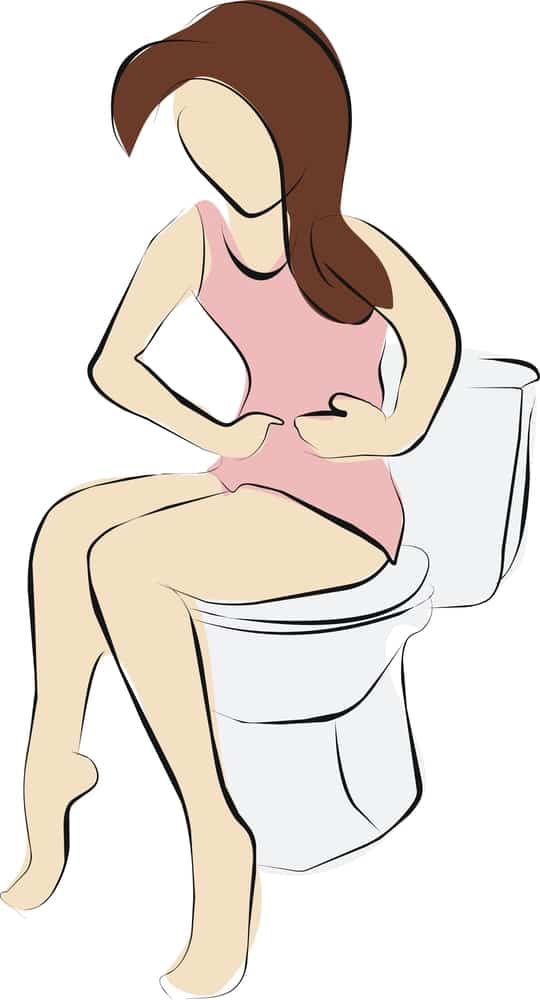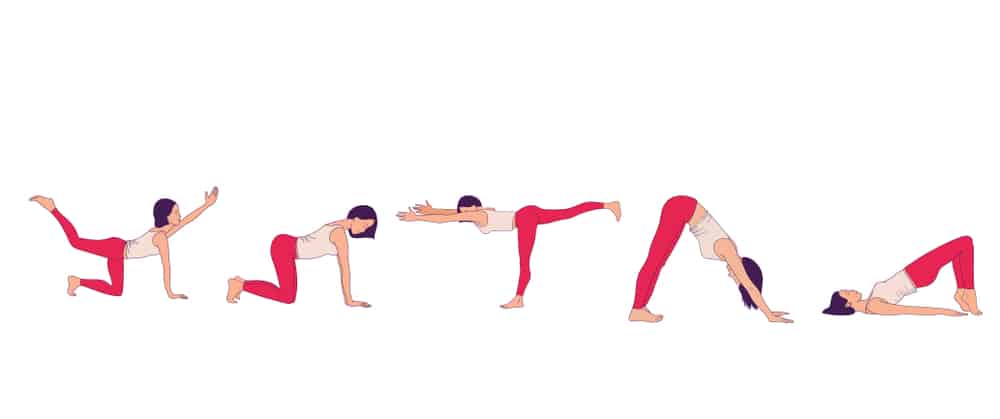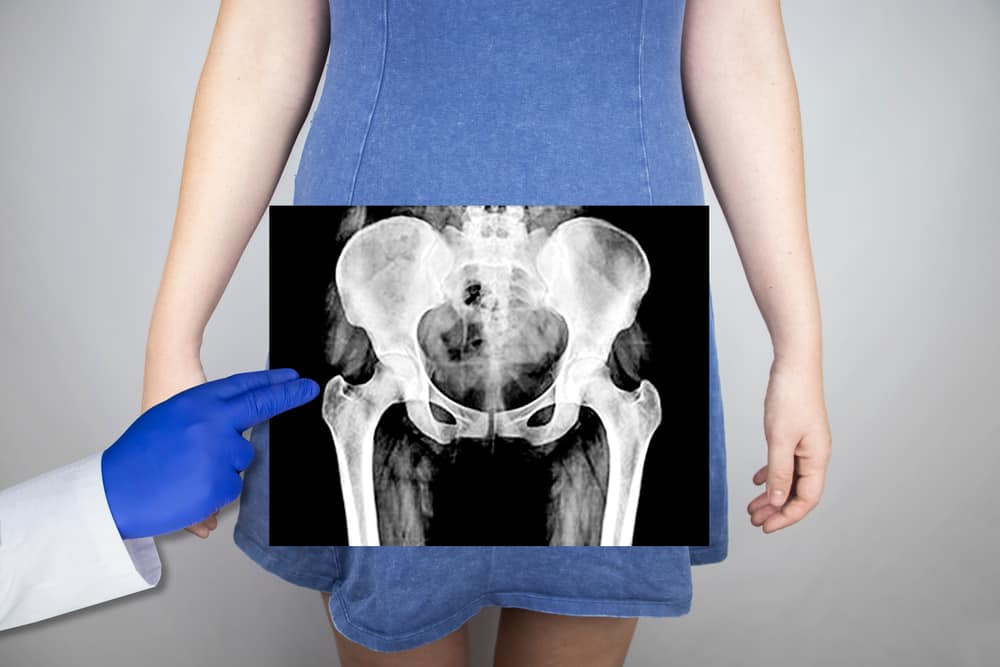Pelvic Floor Dysfunction
If you are lately encountering consistent constipation, having urine or stool leakage, straining to defecate and experiencing a frequent need to urinate? This means you have a condition medically termed as pelvic floor dysfunction. It is the weakening of the pelvic floor muscles that lead to these conditions. It may also probably result in painful intercourse. All of these can be treated using pelvic floor physiotherapy, biofeedback or medication . To know in detail, let’s dive into the article.
What is the pelvic floor?
Think of the pelvic floor muscles as core muscles in ordinary language. The “pelvic floor” refers to a set of muscles that link to the front, back, and sides of the pelvic bone and sacrum (the huge fused bone at the bottom of your spine, right above the tailbone) (the large fused bone at the bottom of your spine, just above the tailbone).
These muscles, like a sling or hammock, support the pelvic organs, such as the bladder, uterus or prostate, and rectum. They also encircle your urethra, rectum, and vaginal canal (in women).
The main function of the pelvic floor muscles is to support coordinated contracting and relaxing these muscles to perform bowel and bladder functions.
When these muscles do not work properly we call it the weak It’s proper relaxation is required for urination, bowel movement and sexual intercourse in women.
What is pelvic floor dysfunction?
In pelvic floor dysfunction the involuntary control over the pelvic floor muscles is lost. In this condition a person can not correctly contract or relax their pelvic floor muscles to perform functions like urinate or have bowel movements.
If you are feeling heavy in the pelvic area that is surely due to this reason at large.
It causes pain in the pelvic area due to a weak pelvic floor. If you are constantly asking yourself : why is my bottom leaking?
Why do I have pelvic floor pain? You know now what’s responsible for it. These muscles are a big support system for these organs. Pelvic floor dysfunction, if left untreated, can cause discomfort, long-term colon damage, and infection.
SYMPTOMS AND CAUSES
What causes pelvic floor dysfunction?
There can be no specific cause or culprit to blame. Although some of the contributing factors to the pelvic floor dysfunction are given below:
- Age factor: With increasing age your muscles lose their flexibility and hence weakening of the pelvic floor muscles takes place.
- Pregnancy: Pelvic floor dysfunction is frequently caused by pregnancy. After giving birth, many women develop pelvic floor problems. During pregnancy, your pelvic floor muscles and tissues might become stretched, especially if your labour was protracted and tough.
- Trauma: Any injuries to the pelvic area (core) might lead to pelvic floor dysfunction.
- Overweight: Body fat puts pressure on the bladder and bowel, making it harder to control the flow of urine, faeces, or wind. Women with a BMI greater than 30 have higher intra-abdominal pressure (pressure inside the abdomen), which might impair the ligaments and structure of the pelvic floor.
- Over Activity: It can lead to the over excessive use (like pushing too hard, using restrooms a lot) of pelvic floor muscles, will lessen your muscles coordination.
- Pelvic Surgery: A pelvic floor surgery might be the secondary cause of the pelvic floor dysfunction. An incision might cause any inflammation in the pelvic region which leads to disruption in its function.
- Nerve Damage: In the pelvis, the pudendal nerve can be detected. It is the largest division of the pudendal plexus (a network of nerves) and is found near the tailbone, behind the sacrospinous ligament. Any damage to the nervous system may lead to pelvic floor dysfunction.
What are the symptoms of pelvic floor dysfunction?
There are a range of symptoms in different people. If you have a pelvic floor dysfunction, then weak pelvic floor symptoms might include:
- Urinary issues such as urinary urgency, frequency, hesitation stopping and starting of urine stream, incomplete emptying bladder or pain during urination.
- Constipation or pain with bowel movements.
- Unexplainable lower back pain.
- Pain in genitals, rectum or generally in pelvic region.
- Muscle spasms in the pelvis due to uncoordinated muscle contraction.
- Painful intercourse for women.
- Pressure in the pelvic region or feeling heavy.
- Bowel strains.
How is pelvic floor dysfunction diagnosed?
Self diagnosis is never prescribed. It is good to visit a physiotherapist who might assess your condition and analyse it on the basis of prior knowledge. Your health care provider or physiotherapist might follow a series of steps to diagnose your condition. It is not a one step process. To begin with:
Step 1: Patients History
Your physiotherapist will first take your medical history and observe your symptoms. They might ask a number of questions as:
- Do you have a history of urinary tract infections lately?
- Have you given birth (if a female patient shows up) ?
- Do you have pain when you have sex(female patient) ?
- Do you have interstitial cystitis (a long-term inflammation of the bladder wall) or irritable bowel syndrome (a disorder of the lower intestinal tract)?
- Do you strain to pass a bowel movement?
Step 2: Examination/Assessment
After that your physiotherapist will do a physical examination after the initial session to check for muscle spasms or knots. They’ll also look for signs of muscle weakness. They may go for an external or internal examination.
In the external exam they will check your posture, flexibility and strength around your lower back , hips and pelvis. They may assess your abdominal muscles, pelvic muscles or lumbar spine. Your physical therapist may use externally placed electrodes on the perineum (the area between the vagina and the rectum in women/the testicles and the rectum in men) and/or sacrum (the triangular bone at the base of your spine) to see if you can contract and relax your pelvic floor muscles effectively.
In an internal exam, they may place two fingers in the vagina or rectum. Internally, contractions of the pelvic floor can also be measured using a perineometer, which is a tampon-like sensor that can be inserted into the vaginal or rectum.
Step 3: Tests
Your general physician or physiotherapist might also use few tests to detect pelvic floor dysfunction. They may use :
- Anorectal manometry: Pressure, muscle strength, and coordination can all be tested by anorectal manometry (a test that determines how well the anal sphincters are working). This is a painless test.
- Defecating Proctogram: A defecating proctogram is an X-ray test in which you are given an enema with a viscous liquid that may be seen. As you try to push the liquid out of the rectum, your provider will utilise a unique video X-ray to record the movement of your muscles. This will demonstrate how well you can pass a bowel movement and whether you have any additional factors for pelvic floor dysfunction. This is a painless test.
- Uroflow Test: A uroflow test can reveal how well your bladder can be emptied. If you have a weak urine flow or have to stop and start urinating, it could be a sign of pelvic floor dysfunction. If you’re having trouble urinating, your doctor may request this test.
TREATMENT
How do you treat pelvic floor dysfunction?
Weak pelvic floor can be treated with pelvic floor therapy or physiotherapy for pelvic floor. It might include a number of pelvic floor exercises. Luckily, it can be treated but it may take a few sessions and may require your time and consistency. It is usually treated without surgery. The goal of treatment is to make the muscles relax in order to allow the bowel movements smoothly and may have better control.
Some of the non invasive methods are given below:
Pelvic floor physical therapy:
There are two conditions with pelvic floor dysfunction i.e hypertonic pelvic floor and weak pelvic floor. As we are discussing weak pelvic floor, your pelvic floor physiotherapy session will mainly treat the underlying cause of it. Your physiotherapist will suggest pelvic floor exercises that will in coordination work with biofeedback to treat the pelvic floor dysfunction. The therapist will assess which muscles in your lower back, pelvis, and pelvic floor are overly stiff and teach you stretching pelvic floor exercises to enhance their coordination.
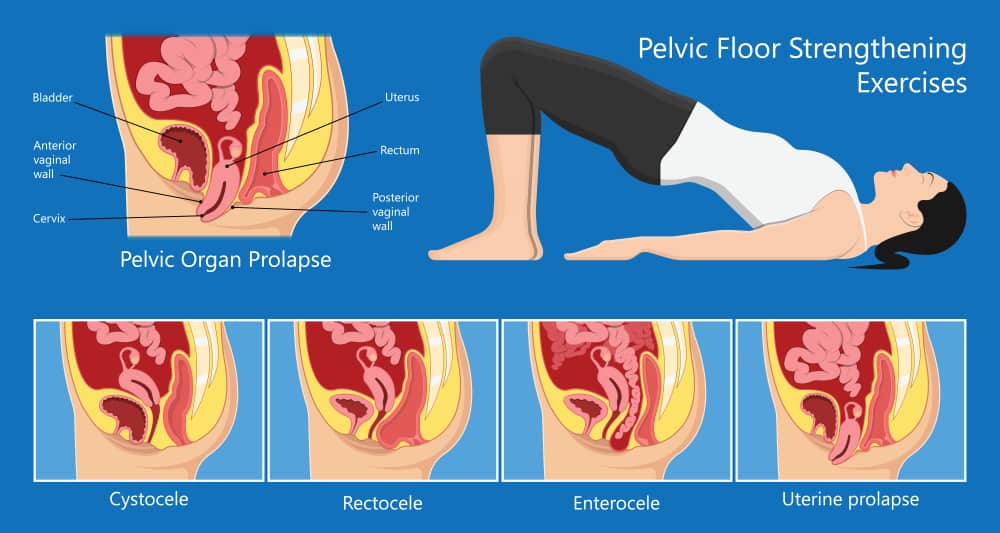
PELVIC FLOOR EXERCISES
Biofeedback:
It is the most popular treatment assisted with the help of a physical therapist mainly due to its painless method. Studies show more than 70 percent of people with pelvic floor dysfunction have been treated. They manipulate biofeedback to regain the normal function of pelvic floor muscles. Either electrodes are placed on the body or probes are inserted into vagina or rectum, which checks the activity of the pelvic floor muscles. Results are displayed on the monitor attached to the device, which provides auditory and visual cues to the patient and physiotherapist to improve the performance in that area. Through the use of sensors, your therapist can track how you relax or contract your pelvic muscles. Your therapist will tell you how to improve your coordination after observing your muscle activity.
Medication:
Medication is the first hand approach to the problem. It is the most common treatment preferred by patients. Generally bowel habits can be improved with medication. Medications are also available over the counter at any drugstore and include laxatives also known as stool softeners such as MiraLAX®, Colace®, Senna or generic stool softeners. Low doses of muscle relaxants such as diazepam (Valium), 2 mg three times a day, may be helpful. The pushing hard to get your bowels to the right tract and excavate, also causes these muscles to weaken. That is why you can always consult your gastroenterologist to advise you of some dietary and lifestyle changes to keep your stool soft.
Relaxation Techniques:
Your physiotherapist might also suggest some relaxation techniques such as meditation, warm baths, yoga and exercises, or acupuncture etc. Avoid pushing too hard to get done with defecation, because it strains your bowels. Warm water relaxes the muscles and also improves blood circulation which is also helpful in this condition. These self care tips might help you a great deal.
Electrical Simulation:
Small probes are introduced into the vaginal or rectum to stimulate the pelvic floor muscles, which helps to desensitise nerves and cause muscles to contract and relax. Electrical stimulation devices are available for home usage in a variety of configurations, including probe-based internal stimulation and external stimulation.
Massage:
Massage is a good option to treat your pelvic floor dysfunction either done internally or externally. Internal massage entails the therapist directly massaging the connective tissue of the vaginal or rectum with a finger. Thiele Stripping is a procedure in which your therapist locates and massages an internal trigger point in the pelvic muscles. Deep tissue massage, skin rolling, joint mobilisation, and therapies designed to calm your pelvic floor are examples of external approaches.
Amongst other treatment options you have surgical methods.
Surgery:
If your pelvic floor dysfunction is caused by rectal prolapse, a condition in which the rectal tissue falls into the anal orifice, surgery will loosen and relax the damaged pelvic organs. Pelvic floor prolapse can not be treated without surgery. In most severe cases the muscles in women body loosen up and the result is fall of one of the pelvic organs to the vaginal or anal opening. A surgical procedure in that case is the most suitable.
Does pregnancy cause pelvic floor dysfunction?
Yes, pregnancy is a common cause of weak pelvic floor muscles. Pregnancy involves all your pelvic floor organs to be strained throughout the process of childbirth, especially when the labour is long or too hard on your body. The muscle loses its elasticity and either loosen up or it becomes in a constant contracted state. Both of which lead to pelvic floor dysfunction. But this is temporary and is called postpartum pelvic floor dysfunction. It can also lead to pelvic floor prolapse.
What does pelvic floor dysfunction feel like?
Pelvic floor dysfunction is not just like any other disease that comes out at random. It does show symptoms often that are very loud about this disease. If you have any of these symptoms try communicating them to your health care provider:
- Having to use the restroom on a regular basis. You may also feel compelled to ‘push it out,’ or you may find yourself stopping and starting repeatedly.
- Having to shift positions on the toilet or use your hand to help expel stool, or straining or pushing particularly hard to pass a bowel movement.
- Constipation is a painful condition that occurs when your bowel movements are forced. It’s estimated that up to half of those who have been constipated for a long time also have pelvic floor dysfunction.
- Urinating painfully.
- Leaking stool or urine. Also known as incontinence that might lead to embarrassing situations.
- Constant lower back pain without any apparent underlying cause.
- With or without a bowel movement, you’re experiencing persistent pain in your pelvic region, genitals, or rectum.
If you feel like any of these symptoms it is proof that you have pelvic floor dysfunction.
Is pelvic floor dysfunction different for men and women?
Yes, pelvic floor dysfunction has its symptoms different for both men and women.
Pelvic floor dysfunction in men:
Millions of men all over the world suffer from pelvic floor dysfunction each year. Because the pelvic floor muscles are involved in both the waste (excretory) and reproductive systems during urine and intercourse, pelvic floor dysfunction can coexist with a variety of other male-related diseases, including:
- Male urinary dysfunction : This disorder can cause leaking urine after peeing, incontinence (running to the restroom), and other bladder and bowel problems.the constant urge to pee would not let them rest.
- Prostatitis: Prostatitis, an infection or inflammation of the prostate, has symptoms that are quite similar to pelvic floor dysfunction (a male reproductive gland). Bacteria, sexually transmitted diseases, and nervous system damage are all possible causes of prostatitis.
- Erectile Dysfunction : It is when men finds it hard to get or maintain an erection during sex. Although pelvic muscle tension or pain can be the cause, ED is a complicated disorder, therefore this isn’t always the case. It impacts your marital or love life in large.
Pelvic floor dysfunction in women:
Pelvic floor dysfunction, which affects the uterus and vagina, can cause problems with a woman’s reproductive health. Pelvic floor dysfunction can cause various symptoms in women, such as pain during sex.
Pelvic organ prolapse is not the same as pelvic floor dysfunction. Pelvic organ prolapse occurs when the muscles that hold the uterus, rectum, and bladder in place weaken and become overly stretched out. Pelvic organ prolapse occurs when the organs of the pelvis protrude (stick out) of the vaginal or rectum, requiring women to push them back within.
Who treats pelvic floor dysfunction?
It usually depends on the severity of your symptoms and the amount of pain you feel. You might be treated by your regular general physician, a women’s health qualified physiotherapist, a gynaecologist, a gastroenterologist, a pelvic pain anaesthesiologist, or a pelvic floor surgeon.
Does pelvic floor dysfunction go away on its own?
No medical condition goes away on its own. At some point one needs to see a doctor. Similar is the case here, if conditions like overactive bladder or bowels or any organ prolapse may persist, it may lead to further problems. Instead of living with pain and embarrassment, it is better to improve your everyday life by visiting your healthcare provider.
Is pelvic floor dysfunction curable?
Luckily, it can be cured with the help of biofeedback, physical therapy and medications. As soon as you feel symptoms of pelvic floor dysfunction and start asking for professional care regarding it, the more easily you will recover. Early treatment can help you enhance your quality of life while also alleviating bothersome and unpleasant symptoms.
Is pelvic floor dysfunction a disability?
Pelvic floor dysfunction is not officially recognised as a disability by the Social Security System. However, depending on your symptoms, you may be eligible for disability under Section 6.00, Genitourinary (genital and urinary) Disorders, of the ‘Disability Evaluation Under Social Security’. Check with your provider and social security contact for more information.
How can you book an appointment with Pelvic Floor Physio?
We aim to see you within 24 hours so contact us to make an appointment or to find out more information on how we can help you, please call us on 07515280990 or email us primephysiocareluton@gmail.com. We are one of the best clinics whose physios are registered with HCPC, CSP and Physio first as well have enormous experience. Our Pelvic Floor Physio’s are are expert in their field and knowledgeable.
COMMON FAQ’S
How long can pelvic floor dysfunction last?
Pelvic floor dysfunction can last 4 to 5 weeks after you begin your treatment. If it is chronic then you might be on complete bed rest for 3 months until you recover fully.
What are the symptoms of tight pelvic floor muscles?
Constipation, straining to defecate, urine or stool leakage, and a frequent need to pee are all indications of a tight pelvic floor.
Does pelvic floor dysfunction ever go away?
Yes It goes away as soon as you start treating it. You can either choose non-invasive or surgical method to get rid of it.
Are squats good or bad for the pelvic floor?
Yes, Squats are a great exercise to work your quads, hamstrings, and glutes, as well as your pelvic floor muscles. These can be performed with or without the use of additional weights or dumbbells, relying solely on your own body weight.
Are Kegels the same as pelvic floor exercises?
Kegels and pelvic floor muscle exercises are the same thing! Kegels is a phrase that people use to refer to the same set of muscles. The same exercises, too! It’s a term that’s most popular in the United States.
Does caffeine affect the pelvic floor?
Yes, Caffeinated beverages (coffee and tea) act as a diuretic and bladder irritant, causing the kidneys to produce more urine than usual. This leads to bladder irritation and misuse.


